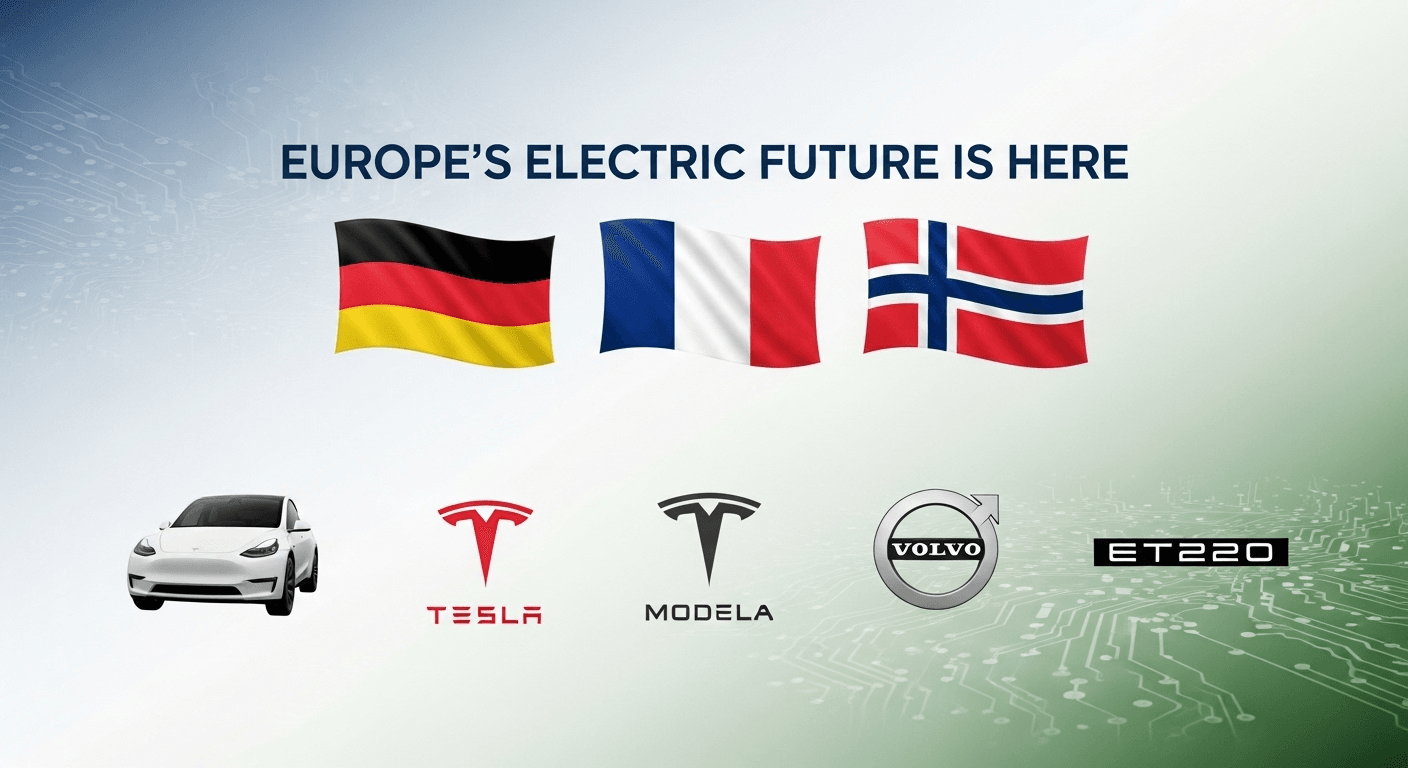Europe’s EV market is a fascinating glimpse into the future. With a stunning 29% market share, the data shows three clear winners and one surprising trend that could be coming to the US next.
The world of electric vehicles is moving at lightning speed, but if you want a real glimpse into the future, you have to look at Europe. While other markets are still grappling with the transition, Europe has fully embraced it. New data shows that an incredible 29% of all new cars sold across the continent are now electric.
But the most fascinating story isn’t just the overall number; it’s who is winning.
Respected industry analysis site CleanTechnica just released its deep-dive report on the European market, and the data reveals a clear picture of the “new normal.” We’ve analyzed their findings and distilled them into three simple, powerful charts that explain everything you need to know.
1. The Undisputed Champion: Tesla’s Unbreakable Lead
The first, most unavoidable takeaway is that in a mature, competitive EV market, Tesla doesn’t just compete; it dominates.

The data shows a stunning 1-2 finish for the American brand. The Tesla Model Y continues its reign as the single best-selling vehicle in Europe, not just among EVs, but among all cars. Its sibling, the Tesla Model 3, takes the silver medal.
The only other vehicle to crack the top three is the new Volvo EX30, a fantastic and stylish compact SUV that has clearly resonated with European buyers. But the message is clear: even with a flood of new competitors, Tesla’s combination of brand power, technology, and a world-class charging network remains the benchmark.
2. The Surprise: “Pure Electric” is Winning the War
For years, the debate has raged between all-electric vehicles (BEVs) and plug-in hybrids (PHEVs). The latest European data provides a decisive answer.

Of the total 29% market share for plug-in vehicles, all-electric cars now make up 20%, while plug-in hybrids account for just 9%. This is a critical trend. It shows that as consumers become more educated and public charging infrastructure improves, they are increasingly choosing to go “full electric” rather than opting for the compromise of a PHEV.
3. The Big Picture: The Shifting Sands of Brand Loyalty
While Tesla holds the top spots, the broader market is a dynamic battlefield.

Looking at the overall market share by automotive group, a more complex picture emerges. While Tesla still leads, legacy giants like the Volkswagen Group and Stellantis (the parent company of Peugeot, Fiat, and Jeep) hold powerful second and third positions, respectively, thanks to their wide portfolio of different EV models.
This shows that while Tesla wins the individual model race, the legacy automakers are leveraging their massive scale and brand diversity to remain formidable competitors in the electric era.

Why This Matters for the US and the Rest of the World
Europe is our crystal ball. The trends we see playing out there today are a strong indicator of what’s to come in the North American market over the next 2-3 years.
- The Lesson: Expect the dominance of top-tier, desirable models (like the Model Y) to continue, but also anticipate a much more fragmented and competitive market as legacy brands ramp up production of their own compelling EVs. The “pure electric” trend also signals that as charging anxiety decreases, the American market will likely shift more decisively away from PHEVs.
The electric future isn’t just coming; in Europe, it has already arrived.
Source / Citation:
CleanTechnica – Europe EV Sales Report (July, 2025)

Suhas Shrikant is the founder of Vecharged and an engineering enthusiast specializing in high-power off-grid solar systems. He has designed and built over a dozen custom systems and uses his hands-on, field-tested experience to create Vecharged’s expert guides and reviews.













